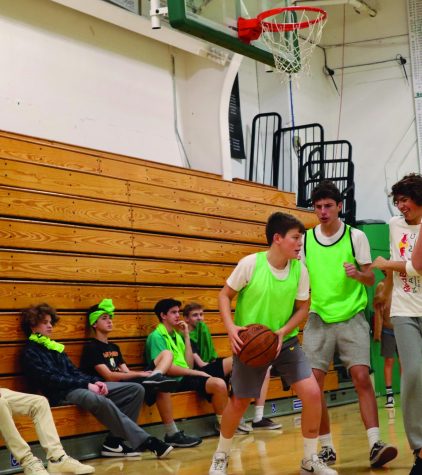Student field trips sparse; neglect pivotal part of high school experience
It’s time to digitize field trip forms so parents may complete them online.
Part of the Tam District Mission Statement reads, “all students…will be offered meaningful learning experiences to enable them to access and critically analyze information, pose substantive questions, and communicate effectively.”
While meaningful learning experiences can be found in the classroom, there is no substitute for a field trip. Witnessing and experiencing the practical, real world applications of the subject might create a passion or channel an interest.
Oct. 7 marked the first field trip of my high school experience, neither of which were during school hours. On this particular Friday night, Eugenia Ives took a group of her AP Literature students to see a production of Euripides Medea, by the College of Marin’s Theater Department following our study of the play.
Before this play, I had never perceived field trips to be a particularly important element of my learning. Now, however, my perspective has changed. In a culturally and artistically stimulative environment, I witnessed Medea’s performance.
Not only was the field trip a refreshing and exciting alternative to the classroom, but the experience was a powerful way to bring to life the content I had studied.
Sue Fox, Environmental Science teacher for the SEA-DISC academy, believes that field trips “bring real world learning to life for students.” As a part of a program that focuses on environmental studies, work in the field is very important. She takes students on 10-15 field trips per year.
For Fox, the paperwork for SEA-DISC field trips can be completed in chunks. Up to five field trips can be submitted under the same set of parent paperwork, which makes Fox’s job much easier. For individual teachers without an academy schedule for field trips, however, separate paperwork must be filled out for each field trip the teacher plans to take.
The approval process is arduous and can be discouraging for teachers who seek to get their students out of the classroom. One of the most difficult aspects of the process is collecting correctly completed field trip forms from every parent via their students.
If there is an error, or something is missing from the form, the teacher must send them back to the parent for correction. Without correctly completed forms, field trip approval is delayed.
“A lot of teachers on top of their already full jobs don’t have the bandwidth, the organization, or the follow through, to get their field trips off and running in a timely fashion. Some teachers might start it so late that they can’t follow up on the parents that are dropping the ball,” Fox said.
As far as progress goes, the district field trip committee met on a regular basis last year to discuss a revision of the field trip process. They made progress incorporating a digital platform that would supposedly replace the current paper based system. However, the committee is no longer meeting.
A check of the school’s website reveals that parent forms like Adult Field Trip Waiver, School Driver Certification Form, Student permission form-single trip, and Student permission form-multiple trips are available for parents to download and complete. However, teachers cannot access the form that initiates the trip from the any part of the school’s web page. They must go to the district’s web page to find it, print one, fill it out, copy it, and send it home with their students or scan and attach to parent emails.
Your donation will support the student journalists of Archie Williams High School. Your contribution will allow us to purchase equipment and cover our annual website hosting costs. Each donation will receive a magazine subscription for a year (6 copies a year), and become a part of the important work our publication is doing.
$35 -- Subscription to the magazine
$50 -- Silver Sponsorship
$75 -- Gold Sponsorship
$100 -- Platinum Sponsorship





